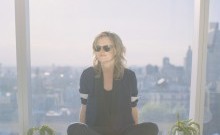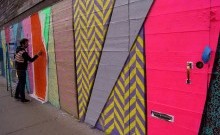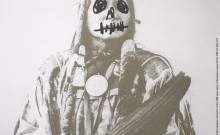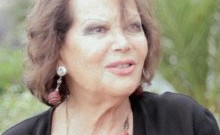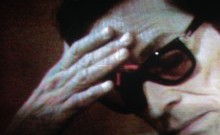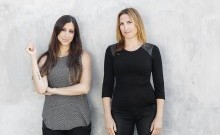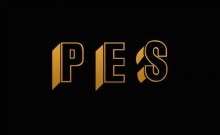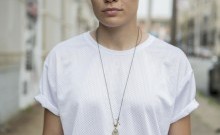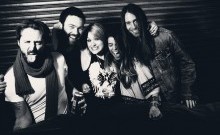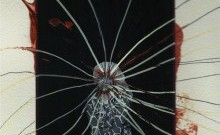Fellow Humans
For up-and-coming visual artist Wenjun Liang, being an artist is something she did not consciously choose- it was something she innately did starting from a young age. It was only when she began formal art classes did she realize that art would be a legitimate career path for her. While she continues to develop as an artist and has already explored the mediums of painting and photography, as with any emerging artist her body of work will doubtlessly continue to grow and change, which is the most exciting aspect of beginning to follow an artist at the beginning of their career. With themes drawing on humanity and internal emotions, she creates powerful images that are a striking addition to any collection.
Sarah Arison: What artists do you study and admire and how do they influence you?
Wenjun Liang: I draw my inspiration from a broad range of sources. If I have to put it into genres, I think I’m mostly influenced by gothic art, classical music and paintings - specifically, the Dutch golden age and Flemish Primitive paintings. I was also hugely influenced by ancient Chinese poetry while growing up. Culturally acclaimed master films also help me think about humanity and visual language. Daily observation of fellow humans coupled with my past limited experience of psychology study also have an impact on my portrait work.


SA: Talk about your progression as an artist- from painting to photography and anything you'd like to go into in the future and how you see your work developing. And did you always know that you wanted to be an artist?
WL: I have never thought about it. Becoming an artist is such a vague notion and I still don't know what it means when I look at this word. I've been drawing since I was a child living at the country side. I have always been a critical and creative thinker. I think the first moment of realization that I may become that person was when I met my first oil painting teacher at 16. He was a german classical painter, who lived an amish sort of life style in a modern city. We spent the weekends painting at the studio while listening to hardcore cello works. The teacher`s wife would be sitting doing needlework and sometimes light his tobacco pipe with matches. I thought life would be so great to dedicate and focus on one little thing, and believe in it with your entire being.
From painting to photography… I think at the end of my initial art college education, I found painting to be a very personal experience. The way photography interacts, and the freedom within the creative process intrigued me. I then went back to school again at SVA to studied photography.
For me, photography is like fractions. With hyper technical math calculations you are very likely to get what you aim for, but there is always something else in it that is magical and unpredictable. The art study shapes the aesthetic of my work. For example, the detailed realism aspect of painting influences the way I think about light. When I take a picture, I must find the inner emotions first because I am used to the thought process of creating images from a blank surface. Therefore, in my work, you see more constructs and emotional exchanges rather than a decisive moment.
SA: What are some other hobbies?
WL:They change every couple years. I've always been a cinema geek and I enjoy traveling and cooking stews.
SA: What's a day in your life like?
WL: Like most other freelancers and art workers, each of my days can be very different from one another. Sometimes I spend an entire week only to sleep/eat/work on a project to meet a tight deadline. Or being immersed in a creative process that produces copious amounts of mental stress. Other days I spend my time reading books on the promenade during the light hours and just wandering around at night.
I love to be outside and connect with phenomenal people, but I keep most of my time to myself as I value a peaceful corner in every environment. Being able to keep a piece of my mind isolated is essential. I don't feel well if my daily routines lack quiet time here and there.
SA: What are some of your favorite cultural institutions and why?
WL: All museums in general! Especially art museums, each one is a controlled, intimate environment to witness evidence of how art shapes the world. I like experiencing the energy captured in the elements from different periods of time and space, each of them being individual doors that lead to a vast archive of knowledge and perspective of cultures.
SA: Talk a bit about @60 and how it's helped (if at all) and some of the struggles that you feel emerging artists have?
WL: Not sure about other artists, but for myself, besides the expensive living costs and fluctuating income, the biggest challenge is to climb that invisible mountain. Constantly trying to answer the inner voice of what is the next thing in this journey. Unlike other industries, there may not be any leads or guidelines for one`s path. It is a constant practice of intuition, analyzing fleeting ideas and improving methods and skill sets to materialize them. Finding a way to keep myself inspired, yet to be as original as possible within my knowledge, is quite the challenge as well. In New York City specifically, it is sometimes hard to be as focused as I wish to be.
@60 was my representative for a show at Park Avenue Garage - the Memorial Sloan-Kettering Cancer Center beneficial sale. It was a great experience to attend a show with other talented artists that are making work across different mediums. Diversity of art work makes the show interesting, and Kipton Cronkite is such a nice and knowledgeable person to work with.
SA: Is there a place you'd like to see your work end up? Galleries? Museums? Personal collections?
WL: Yes but it would have to depend on which series of work and under what circumstance, etc. To be part of a cultural institution would of course be a wonderful accomplishment.
Photography by Vicente Munoz
